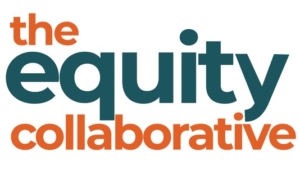The Students’ Six:
Strategies for Culturally Relevant Teaching
At the heart of The Students’ Six strategies is the idea that students have a lot to teach teachers when it comes to addressing issues like race, racial justice, racial dynamics, and cultural sensitivity in the classroom. We’ve developed a process to help that teaching happen. It’s a process drawn from from research-based strategies that have been proven effective with students of color.
The Students’ Six is not a product or a resource in and of itself. Rather, it’s a process—a process built on facilitating open communication between students and teachers. The six strategies listed below grew out of one particular implementation of the process. Here’s a nice article from KQED’s Mind/Shift blog about how The Students’ Six process took shape in Chapel Hill, North Carolina.
Have any questions? Want to learn more about implementing The Students’ Six in your school? Please contact us.
1. Be visible.
Make sure every student feels welcome and part of the class. The simplest examples of this are greeting each student when he or she comes into class and knowing everyone’s names. Small signs that teachers know and are interested in students go a long way to forming trust.
2. Create a safe space.
The way a room is arranged and a teacher’s physical proximity to students can make a difference when trying to reduce the vulnerability students feel. If teachers stay behind their desks, they inadvertently signal they want space between themselves and students. Teachers who walk around the room and check in on student progress create a more equal and focused space.
3. Connect to students’ lives.
Give students a reason to care about what they’re learning by connecting it to situations and concepts that are relevant to their lives. For example, in English class, teachers can assign current event articles on subjects students care about or that affect them. Math teachers can make strides just by making sure the problems deal with quantities and situations kids understand. Learning could be even more relevant to kids’ lives, but starting with a basic connection is a good way for students to feel teachers cares about their lives.
4. Connect to students’ culture.
Make positive connections with student culture through class assignments. For example, one teacher in the Carrboro district created an ancestor project around the traditions of Day of the Dead. The class studied the Mexican holiday, but also talked about the ways various cultures connect with ancestors.
Conversely, cultural differences can make for classroom clashes if teachers aren’t aware. One teacher sent a student to the principal’s office for being disrespectful because he answered a rhetorical question. The student didn’t understand why he was being disciplined because his culture doesn’t have rhetorical questions; he’d been taught to answer teachers.
5. Address race and racial dynamics in the classroom.
This is one of the most uncomfortable steps for many educators who either don’t know what to do when a racially-charged incident occurs in class or don’t want to see racist themselves by calling out a student’s race. But by ignoring a fundamental part of student identity, teachers can inadvertently misstep and damage student trust. A common example is calling on students of color to represent their entire race in a discussion where few others minorities are represented.
6. Connect to students’ future selves.
Teachers need to recognize that all their students have dreams about what their futures will look like. Too often, the implicit message in school is that white students have bright futures with many career paths to follow, but students of color aren’t likely to go anywhere. Students and their families have a lot to offer schools and that should be celebrated. Too often curriculum implies that only white Americans made important discoveries and positively impacted the outcome of the country. With a little more research and attention to race in the classroom, teachers can easily highlight the many people of color who have made scientific discoveries, are brilliant mathematicians or have added to our collective literary history.
